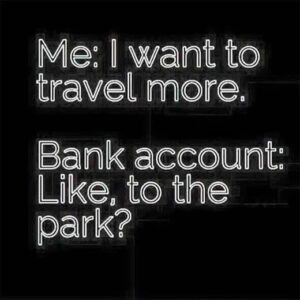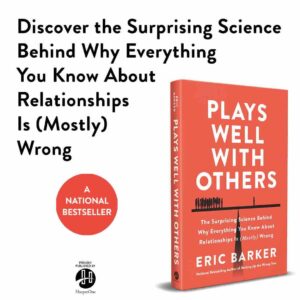
“Don’t start with a product. Start with a problem you’re on fire to solve.”
— JD Meier
I’ve lived at the intersection of innovation and business building for more than two decades at Microsoft.
I’ve worked behind the scenes helping CEOs rethink their futures, guided founders through billion-dollar pivots.
And turned startup ideas into strategic businesses.
But my favorite work is helping people, just like you, start and grow real businesses that actually matter.
From coaching solopreneurs in my backyard to advising entrepreneurs across the globe, I’ve learned one thing:
the traditional advice about starting a business misses the point.
It drowns you in logistics before helping you answer the only questions that matter.
That’s why I created this 10X Guide.
It’s not a checklist. It’s a smarter way to start. It’s a strategy-first approach designed to help you build your business around you: your strengths, your story, and the people you’re here to serve.
Let’s go.
Part 1: The 4 Core Questions That Matter
1. Who is the Customer?
Not a demographic—this is a person with a story. Give them a name, a day in their life, and a desire.
Action: Write a vivid customer story. What do they want to change? What do they care about?
2. What’s the Problem?
No problem, no business. Find the pain, friction, or frustration. Better yet: solve a problem people already pay to solve.
Action: What makes this urgent? How are they solving it now (and why does that suck)?
3. What Does Success Look Like?
What transformation are you creating? Show the “after”.
Action: Define a tangible win for your customer. Be specific—emotional, financial, practical.
4. Who Is the Competition?
Not just direct competitors—look at current behavior. What are people already doing to fix this? Action: List existing solutions. Now explain why your way is meaningfully better.
Part 2: The Strategy Layer
Positioning:
What category are you in, and how are you different?
Formula: For [customer], who [problem], we offer [solution] that [unique outcome].
Blue Ocean Strategy:
Can you redefine the problem? Can you target an underserved niche? Can you eliminate industry BS?
Unique Sustainable Value:
What do you have that others can’t easily copy? This could be your personality, your process, your community, or your IP.
Part 3: Purpose Venn (The Power Lane)
Where these 4 circles overlap:
- What do you love?
- What are you good at?
- What does the world need?
- What will people pay you for?
This is your founder edge. Build your business from here and everything works better—especially when things get hard.
Part 4: Fast Path to First Dollar
You don’t need a website or a logo to start. You need a conversation.
Steps:
- Identify 5 people who might want your help.
- Talk to them. Listen deeply.
- Offer to solve their problem.
- Charge a fair price.
- Deliver results.
Rinse. Refine. Repeat.
Mini Case Studies: How Others Did It
Maya: From Idea to $1K Coaching Client in 3 Weeks
Maya was a mindset coach stuck in research mode. She used the 4 core questions to define her ideal client and offered free sessions to test her idea. Her third conversation turned into a $1,000 paid engagement—and a repeat client.
Tariq: Building a Global Side Hustle from His Garage
Tariq loved customizing sneakers. He documented the process on Instagram, created a simple order form with Typeform, and used DMs to sell. In 60 days, he made enough to quit his part-time job.
Elena: Corporate Escape to Wellness Coaching
After 15 years in finance, Elena wanted to help burned-out professionals reclaim their health. She turned her personal journey into a compelling story, packaged it as a 4-week coaching program, and made her first $3,500 in a month with only 8 clients.
Part 5: Your Founder’s Edge
You bring something no one else does: your story, your scars, your superpowers.
Answer these:
- What’s something people always ask you for help with?
- What have you solved for yourself?
- What would you do even if no one paid you?
- What unfair advantages do you have (experience, network, insight)?
Turn that into your first offer.
Part 6: Setup & Structure (Only After You’re Clear)
Once you’ve validated your idea:
- Choose your business name & secure the domain.
- Pick a simple business structure (start with a sole prop or LLC).
- Use Stripe, Gumroad, or PayPal to collect money.
- Build a basic brand (start with Canva).
- Create a simple website or landing page (Carrd, Notion, or Shopify).
Keep it scrappy. Fancy comes later.
Part 7: Grow on Purpose
- Marketing: Teach what you know. Show the transformation.
- Community: Build with your audience, not just for them.
- Revenue: Focus on recurring value or high-ticket results.
- Leverage: Automate the boring, delegate the rest.
FAQ: What New Founders Ask Most
Can I start a business with no money?
Yes. Start with skills you already have. Offer services, coaching, or consulting. Use free tools. Charge early. Reinvent later.
What if I don’t have an idea?
You don’t need a “perfect idea.” Start by solving a problem you understand well or helping people who are just a few steps behind you.
Do I need to quit my job first?
No. The smart move is to build on the side. Validate your offer. Make your first sales. Then decide when to go all in.
What if someone else is already doing it?
Good. That means there’s demand. Your edge comes from how you do it—your voice, your lens, your model.
How long does it take to succeed?
It depends. But clarity and focused action compress time. Many first-time founders earn their first $1K in 30–60 days.
Final Words
You don’t need more ideas. You need to make what you already know useful and valuable to someone else.
This is how you start a business built around you—and scale it to something sustainable, meaningful, and exciting.
Let’s go.
You Might Also Like
The Ultimate Guide to Profitable One-Person Businesses in 2025
The Best One-Person Business Ideas
How to Start and Run a One-Person Business
What is a One Person Business?
How To Build a Website for a One Person Business
The 8 Steps to Wealth
50 Ways How NOT To Make Money Online
Pat Flynn on 10 Great Lessons on How to Make a Living on the Internet
The Six-Figure Second Income
Think in Terms of an Hourly Rate



